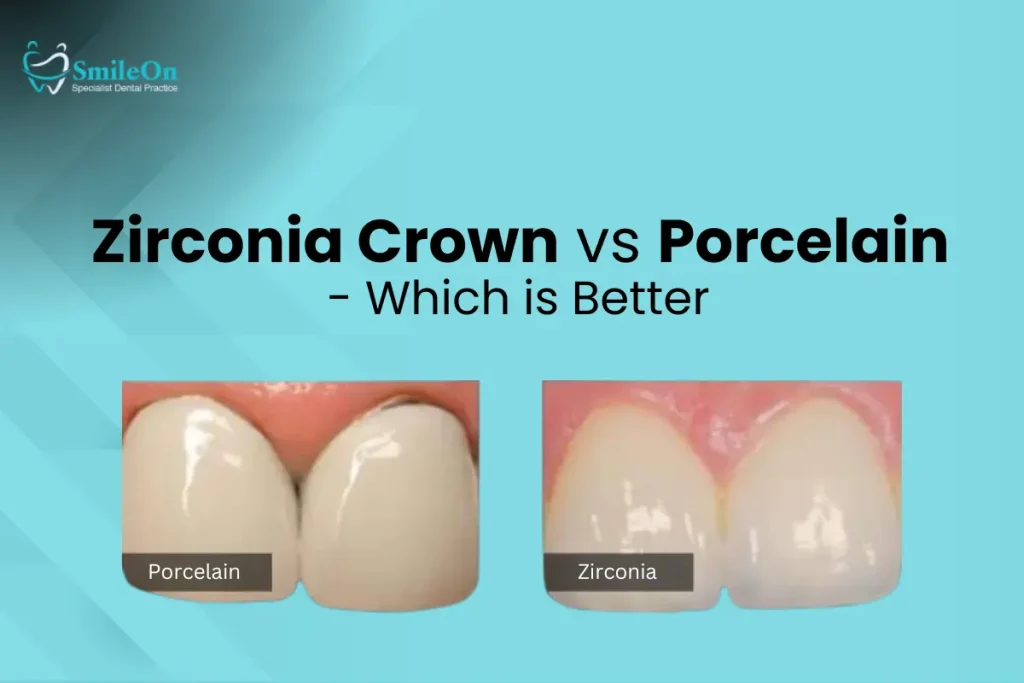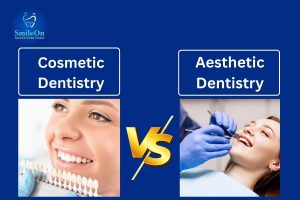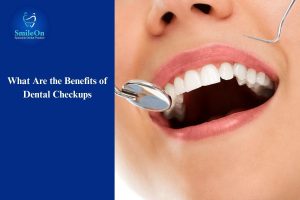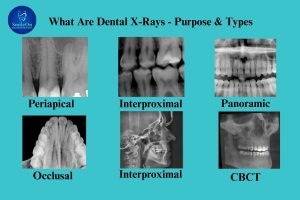Selecting an appropriate crown material does matter in dental medicine. We have two options here: Zirconia and Porcelain crows.
Zirconia crowns rank the entire list of strengths and sturdiness in the following aspects of the material. Porcelain crowns, on the other hand, are also called beautiful crowns by dentists. They look similar to the appearance of natural teeth.
More detailed information about zirconia and porcelain crowns is needed to make the most suitable choice. Keep reading for a better option to get the perfect smile you want to get and your lifestyle, too!
Table of Contents
ToggleWhat is a Zirconia Crown?
This crown is made of zirconium dioxide, a solid type of ceramic. Zirconia crowns are among the materials in demand by dentists and patients because they are very durable.
These crowns are more recommended for molars and other back teeth that require more force when chewing.
Kinds of Zirconia Crowns
However, before that, one should know that there are many zirconia crowns, and each can have different advantages. Let me break them down here:
1. Monolithic Zirconia Crowns
The ceramic crown looks beautiful and is made entirely from a zirconia block. This type of crown is very rigid and can be utilized for back teeth, which require high force for chewing.
2. Layered Zirconia Crowns
These crowns consist of a dense layer of zirconia with a thin veneer layer of ceramic. This lends the strength of zirconia and the beauty of porcelain, which is a more natural color than that of the former.
3. High Translucent Zirconia Crowns
Opaque zirconia crowns are very appealing and are suitable for anterior teeth. These are created with clear esthetics in mind to reflect the appearance of natural teeth and hence can adapt to neighboring teeth.
Problems with Zirconia Crowns
Here is a list of issues any patient may experience with Zirconia crowns.
Lack of Visual Value in Some Cases:
Zirconia crowns, especially monolithic ones, can look slightly darker on the lab than porcelain crowns. However, the old zirconia can be too opaque and not look like a natural tooth anymore. Later, high-translucency zirconia crowns are better than this but may still need to match porcelain.
Solution: If a porcelain layer is given to the crown, it shall be placed together with Zirconia to provide the smile with a more natural look; however, this usually reduces the strength of the crowns.
Abrasion to Opposing Teeth:
This also has its downside because zirconia is very hard; as such, it can wear down other teeth in contact with the zirconia-filled teeth in normal biting and eating. Zirconia became stronger than tooth enamel, causing the opposing teeth enamel to wear out.
Solution: Dentists can still refine zirconia crowns to a smoother surface to minimize chances of wear on the counter teeth.
Vulnerable to Breaking Under Pressure:
While zirconia offers very high durability, it does not mean that it cannot be damaged. Among all kinds of crowns, layered zirconia crowns are usually stuck in chipping or fracture. The outermost porcelain layer of the layered zirconia crowns can break under high stress. However, patients with a heavy bite may need monolithic zirconia or some other crown.
Solution: In the first quadrant, use monolithic zirconia crowns, such as molars, where more strength is required.
Stiff and Hard to Remove:
Zirconia crowns are complex for the dentist to alter or remove because they are hard. Zirconia cementation is more time-consuming and requires specific instruments to adjust the work. However, removal is sometimes needed, which is challenging when carrying on a zirconia crown since it leads to damage.
Solution: If an appliance is not placed and fitted correctly the first time, there may be many adjustments in the future.
Cost Considerations:
It can be stated that all-ceramic zirconia crowns are more costly compared to other crown types. Due to higher material quality and improved production methods, zirconia is more expensive than metals.
Solution: Again, discuss the insurance cost or payment options with your dentist and consider the durability factor against the added costs.
What is a Porcelain Crown?
Porcelain crown is categorized as resembling dental crowns constructed from ceramics. This one is intended to fit and encase a tooth that is fragile or which has been fractured in some way. It is more aesthetic and preferred for anterior teeth and is more catalyzed. They are the closest to the natural teeth shade and opacity, making them preferred by patients who consider cosmetic aspects vital.
Types of Porcelain Crowns
Different crowns made of porcelain come in different types with different advantages or features. Here’s a breakdown of the main types:
Porcelain-Fused-To-Metal (PFM) Crowns
PFM crowns have a metal base and a layer of porcelain. The root is that a metal base provides more muscular tensile strength, making it more robust and durable than crowns made of pure porcelain.
The porcelain layer helps the veneers look like natural teeth without being as realistic and cosmetically pleasing as crowns and veneers made of pure porcelain. However, the metal base tends to show a black line in this area, considering that the gums recede over time.
E Max – Layered
E Max is the latest cosmetic material for porcelain dental crowns and porcelain veneers. They are two-layered crown systems like traditional porcelain fused to metal crowns. The coping is another substantial substructure comprising the thick and sustained supporting layer.
Choose the Right Crown for Natural Looking Smile
Understand differences between zirconia and porcelain crowns to make the best choice for your dental health and appearance.
- Durability and Longevity Compared
- Which Looks More Natural
- Best for Front and Back Teeth

A ceramic artist coats the final working surface with a layer nearly indistinguishable from the remaining teeth to ensure the coping matches the adjacent teeth.
Difference Between Zirconia and Porcelain Crowns
Each has unique features and limitations; knowing these can help you choose.
1. Materially Composition and Structure
Zirconia crowns are created from zirconium dioxide, a high-strength ceramic, with everyone marveling at its strength. It comes in high pressure and is therefore recommended for molar or back teeth.
Porcelain crowns, on the other hand, are made out of a variety of ceramics that look like actual teeth. Zirconia is more robust than other ceramic materials and affords excellent visuals but is usually less intense.
2. Strength and Durability
Zirconia crown is tricky to wear – much more complex than the enamel of the teeth crowns. They do not seize to crack or chip even when subjected to high chewing pressure. This makes them a popular choice for patients with a heavy bite or who tend to grind their teeth.
This is because porcelain crowns are much stronger than zirconia but are more brittle. It may be chipped or cracked if a significant force is applied, especially on the back teeth. There are a little bit of porcelain-fused-to-metal (PFM) crowns, and they are stronger than PFM but not as strong as zirconia.
3. Wear on Opposing Teeth
One adverse effect associated with the use of zirconia is that its hardness causes wear of the opposed teeth. The only drawback of zirconia crowns, which can be observed only if the prosthesis is not polished correctly, is that, during usage, the enamel tends to wear out.
Porcelain crowns have the relative advantage of being more friendly on opposing teeth. Their structure is unlikely mainly to cause abrasive action on the natural enamel, and this can make it possible to opt for the plastic ones if one experiences sensitivity in the bite or has teeth that wear quickly.
4. Procedure and Adjustability
The major disadvantage is that zirconia crowns are challenging to remodel and adjust, particularly after fixing. This type of crown requires specialized instruments for altering or even extracting, so the procedure may take longer than usual.
This, in return, makes porcelain crowns more easily contoured and placed than the All-Porcelain crowns. Dentists can easily shape Porcelain veneers, making them more versatile if small changes need to be made.
The choice is now up to you, and which would be best for you depends on your lifestyle and your mouth health. However, consulting your dentist will help determine whether the crown is suitable for a natural smile to last long.
FAQs
Do zirconia crowns look natural?
Yes, new high translucent Zirconia crowns look like natural teeth. However, porcelain crowns are much more realistic as compared to zirconia crowns.
How long do zirconia crowns last?
They last up to 15 years. If a patient takes care of them properly, they can last more than 15 years.
Can a porcelain crown be reshaped?
Yes, these crowns can be reshaped; they are customizable according to your requirements.
How strong are porcelain crowns?
These crowns are strong but not as much as zirconia. Porcelain crowns are likely to be chipped and cracked under high pressure.






